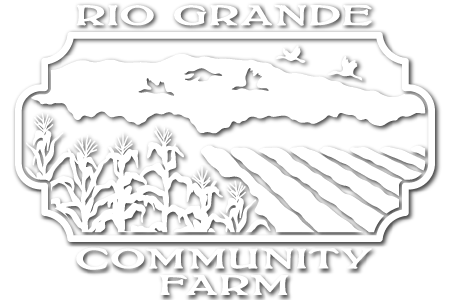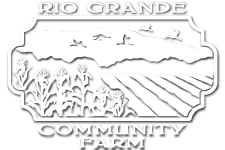OUR PLACE
Our story takes us back to 12,000 years before present (ybp)* when the Paleo-Indians hunted now-extinct camels and other prey using what has come to be known as a Clovis point.
Our story takes us back to 12,000 years before present (ybp)* when the Paleo-Indians hunted now-extinct camels and other prey using what has come to be known as a Clovis point. * years before present (ybp) – primarily an archeological time reference with present being 1950, the beginning of radio carbon-dating.
3,000 – 1,100 ybp
The oldest evidence of farmed food was corn that came from cliff dwellings north of Albuquerque. Pit houses were dug as families depended increasingly upon agriculture. These gave way to the first multi-roomed above ground houses and community buildings.
1500s – 1600s
The Spanish came looking for gold and the Tewa People housed them for two harsh winters. The first aceqias, were built by Indigenous workers in San Juan Pueblo. Forty years after Coronodo came and went, the Spanish invaded.
In 1690, the Pueblo Revolt erupted and drove back the Spanish (so far, this was the only successful resistance against colonization in North America’s history, partly due to the horse). The Spanish returned and re-colonized New Mexico. The kidnapping and indoctrination of Indigenous children, in dedicated missions and schools, as well as exposure to European diseases such as smallpox killed of millions of Indigenous People.
Oñate was exhiled from New Mexico by the Spanish crown for humanitarian crimes against the Indigenous People.
1700s
The parceling of ranchos between 12 families in Bernalillo County, fueled removal of Indigenous Southern Tewa People from the arable river bottom land around Albuquerque. Many fled to Mexico, and returned years later having adopted some of elements of Spanish culture, language, and religion and immdiately rebuilt the demolished Catholic church in the San Juan Pueblo.
1800s
In 1848 the Mexican American War ended and the US declared that New Mexico was now part of the Union. The land was being farmed for corn, wheat, beans, chiles, squash, and native tobacco.
The railroad arrived in downtown in Albuquerque, with industry using up the few resources not extracted by agriculture. The native cottonwoods were gone, and the tilled soil was eroding from flooding and industrialized water systems were imposed on the hydrology that produced the Middle Rio Grande Valley’s wetlands and lakes.
These features dried up as new dams were built, channels were dug or widened and straightened, and a series of irrigation ditches brought water to croplands in Albuquerque, from across mountains, as far away as Chama, New Mexico and Colorado.
1900s
New Mexico entered the US in 1912.
The Mid-Rio Grande Conservation District was formed in the 1930s. The City Parks and Recreation Department was formed to manage open space land to ensure enough open space for residents in 1950.
The Russian Olive and Salt Cedar had been introduced and the bosque quickly became overrun with these invasives that poison the soil for other species.
The Endangered Species Act of 1973 changed human relationship with the land. The Rio Grande Silvery Minnow and its habitat of the Mid-Rio Grande became federally protected in 1992.
Los Poblanos Fields Open Space was purchased in 1995, from a parcel called the Anderson Fields, with a 1/4-cent property tax. Rio Grande Community Farm was established in 1997 on a 50-acre parcel. The City of Albuquerque purchased water-rights for the farm.
2000 to 2023
The Rio Grande Community Farm has touched tens of thousands in our twenty-six-year history. In 2023 alone, 268 of our Volunteers gave 10,000 hours of service to their community.
The Rio Grande continues to be the most endangered river in America, losing 99% of it’s species within the last 100 years.
2024 – 2045
Today, Rio Grande Community Farm manages 27 acres of Los Poblanos Fields. Our neighbors, Scott Rasband and Jacobo Sanchez, also lease and farm LPF land. Rio Grande Community Farm is embarking upon a comprehensive farm design re-visioning process that will include solar electricity, fungal-dominant compost production, wildlife corridors of habitat connectivity along an edible trail, lavender fields, agrivoltaics, incinerating toilets, rain catchment and more.
Join us!

